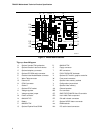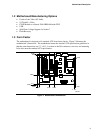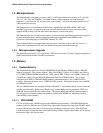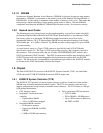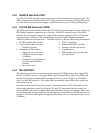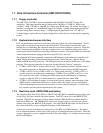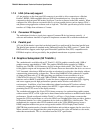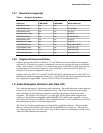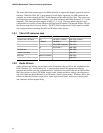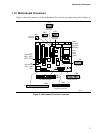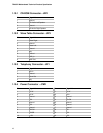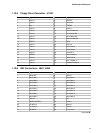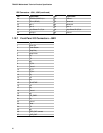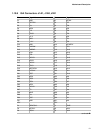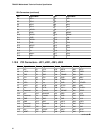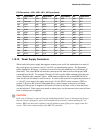
TE430VX Motherboard Technical Product Specification
16
The audio subsystem requires up to two DMA channels (to support full duplex operation) and one
interrupt. When the Vibra 16C is programmed for full duplex operation, two DMA channels are
assigned: one of the channels will be a 16-bit channel and the other will be 8 bits. The system can
be configured to use either DMA channels 1 or 3 (8 bit channels) and DMA channels 5 or 7 (16 bit
channels). The interrupt can be mapped to IRQ 5, 7, 9, or 10. The base address register is also
configurable for a variety of base addresses ranging from I/O address 220 through address 280 (see
the resource map below for more details). The ICU (ISA Configuration Utility) must be installed
and configured before installing the DOS and Windows audio drivers.
1.9.1 Vibra 16C resource map
Device Interrupt (IRQ) DMA Channel I/O Address
Creative Labs 16C Base 2/9 8 bit DMA 1 (default) 220h-233h (default)
5 (default) 8 bit DMA 3 240h-253h
7 16 bit DMA 5 (default) 260h-273h
10 16 bit DMA 7 280h-293h
FM Synthesis 388h-38Bh
Joystick (midi-port) 200h-207h
MPU-401 default is disabled 300h-301h
330h-331h
1.9.2 Audio Drivers
Audio software and utilities are provided via the foundation software CD for the motherboard for
DOS, Windows 3.1x, and Windows 95. A setup program installs the appropriate software
programs and utilities onto the system hard drive. Included in the audio software are DOS utilities
that allow the user to play a CD-ROM, control sound volume and mixer settings, run diagnostics,
and switch between Sound Blaster Pro and Windows Sound System modes. Windows drivers and
utilities include the Windows sound driver, audio input control panel, audio mixer control panel,
and a business audio transport utility.



